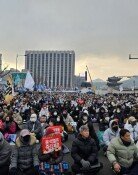The East and the West in the 18th Century
The East and the West in the 18th Century
Posted June. 02, 2007 03:25,

The Supreme World of All Possible Worlds-
Those were the words that German philosopher Leibniz used to describe the 18th century. The 18th century is regarded as an extraordinary era in world history. Europe developed a whole new world thanks to the development of natural science and the emergence of enlightenment philosophies. It was also a peaceful and prosperous era for Asia with the end of a war between China, Korea and Japan. Simply put, it was the supreme era for both the East and the West.
However, Europe and East Asia, the two central axes of the world in the 18th century, produced completely different outcomes. One gained wealth and glory by establishing colonies all over the world while the other was being exploited. So, what exactly was going on in the 18th century?
Joseon (Korea) Envisions a Modern Era-
Joseon enjoyed a renaissance in the 18th century under the leadership of Kings Yeongjo and Jeongjo. The factional wrangling, which had undermined state management, was subdued, and commerce and industry thrived thanks to economic stability. Sons born of concubine mothers caused political strife by joining hands with factions, and writers established coalitions to raise their voices in politics. The most significant change was Joseons encounter with the West. Young scholars such as Hong Dae-young, Park Ji-won, and Jeong Yak-yong, who encountered the science and philosophy of the West through Qing China, actively introduced western culture and products to Korea. With the tacit assent of King Jeongjo, who was liberal with regard to western learning, Catholicism was introduced to Korea, and scholars began studying various western science books. Kings began to describe the country as the peoples nation during this era. It was the people who were considered the major force of the nation.
China, Prosperity within Stability-
The 18th century was the most stable era in Chinese history. Peace was restored after halting revolts from the remnants of the Mongolia and Ming Dynasties. With its thriving commerce and industry, Chinas population jumped from some 200 million people to 700 million people. Catholic missionaries, who won the heart of Emperor Qianlong with gifts such as an alarm clock and a piano, gained permission to stay in Beijing to introduce western culture. During this period, inclusive thinking began to spread, such as the new notion that anyone, including Han people, can become Chinese if they can thoroughly understand and embrace Chinese culture and traditions. This is also the era when the methodology of historical research as an empirical study was developed.
The West Overcomes Complex about Easts Superiority-
With the outstanding achievements of bright minds such as Descartes and Leibniz, the methodological foundation for modern science was established, and science and technology made rapid strides by reaching beyond the confines of religion. Triggered by the awakening of modern citizens, including Jean-Jacques Rousseau, enlightenment philosophies, which emphasize the power of peoples rationality, emerged during this era. Places where people could discuss social issues such as cafés and clubs began to emerge, a French king who was a symbol of autocracy was executed, and a republic was established. Those changes and developments helped Europe gain confidence and completely overcome the long-held complex it had against the East.
Those facts indicate that the 18th century was a golden era for both the East and the West. However, results were markedly different. What was the cause of such disparity? Perhaps the causes were the disappearance of the 18th century spirit and unusual development. The spirit of the 18th century was based on the renewal of old paradoxical systems and the trust in human rationality in the East and the West. However, conservative reforms could not prevail in both Qing China and Joseon. Although Qing China adopted an open neutralization policy, it only helped Manchus, the ruling force, solidify its power through the integration of ideologies with Complete Collection of the Four Libraries.
Joseon failed to transform Seongnihak, also referred to as neo-Confucianism, from an absolute theory that makes the universe into a tool. Resistance was too strong to reform the old system. One common thing can be found between Qing China and Joseon; Both failed to free themselves from absolute existences (Emperor and Seongnihak). This allowed few selected groups to dictate the power and changes in the 18th century. Asia was headed in an opposite direction from Europe, which eventually overcame the absolute beings (Christianity and Kings).
polaris@donga.com
Headline News
- Joint investigation headquarters asks Yoon to appear at the investigation office
- KDIC colonel: Cable ties and hoods to control NEC staff were prepared
- Results of real estate development diverged by accessibility to Gangnam
- New budget proposal reflecting Trump’s demand rejected
- Son Heung-min scores winning corner kick







